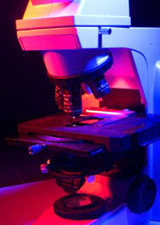» Are there other problems that are commonly seen in the syndrome?

Heart abnormalities
Approximately one in 10 children with the syndrome will have an abnormality of the heart. Most of these abnormalities are small holes between the two sides of the heart which will close as the child grows. Larger holes are rarer and will need surgery to close them. Approximately three in 100 children with the syndrome will have a serious heart abnormality that will require open heart surgery.
Gastroesophageal Reflux
Gastroesophageal reflux is the medical term used when acid from the stomach flows back up into the tube which connects the mouth to the stomach (oesophagus). The acid in the stomach is used to break down food and the lining of the stomach is especially designed to withstand the acid. The oesophagus however was intended to carry food from the mouth to the stomach and does not have an acid resistant lining. If acid from the stomach flows back up the oesophagus not only will this be painful but it can lead to eventual scarring. Medicines can be used to treat this condition and they work by cutting down the amount of acid in the stomach. If medicines are not successful then it may be necessary to operate. Monitoring with a Ph probe and direct examination of the oesophagus with a fibreoptic endoscopy are often used by doctors to diagnose the condition.
Doctors can obtain copies of the published medical papers on this subject by writing to the Foundation.
Deafness
Most children with the syndrome have some hearing impairment and in some cases this may be severe enough for them to need hearing aids.
Behaviour
Behaviour problems in people with CdLS are, by no means, inevitable. In fact, according to members of the SAC, some people have no behavioural problems at all, while others may have only mild, transient problems. Problems that do arise usually respond to treatment. However, there is no denying the seriousness of behavioural issues for caregivers and professionals working with people with CdLS when they do arise. In particular, understanding and coping with challenging behaviours (self-injurious behaviour or aggressive behaviour) can be very difficult for families and carers.
Many behavioural difficulties associated with CdLS are reactive (something happens within the person's body or environment to bring on the behaviour) and cyclical (they come and go). There are two typical periods for behaviour changes to occur: the early years and the teenage years. Like most people, those affected with CdLS develop behavioural problems for a reason and it is important to address the underlying sources of the behaviour.
A common (but not the only) underlying factor associated with behaviour disorder in CdLS, is pain and discomfort. There are many health and medical problems which are characteristic of CdLS. GI discomfort, muscle pain, ear infections, dental decay and even seizure activity can lead to irritability, self-injurious behaviour or aggression. Even people who are mildly affected and communicate well may not recognise the source of their discomfort. Undiagnosed GORD, hip problems and dental decay are some of the most common reasons for changes in behaviour.